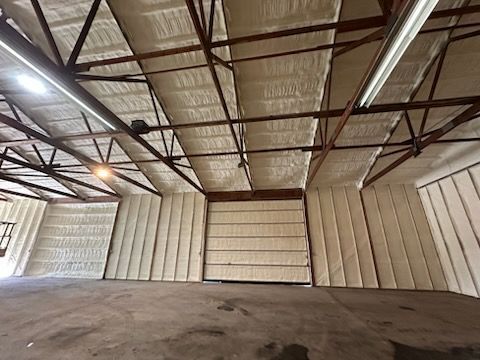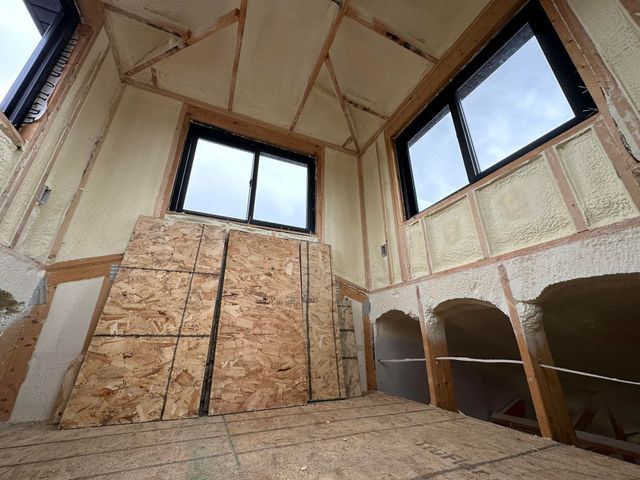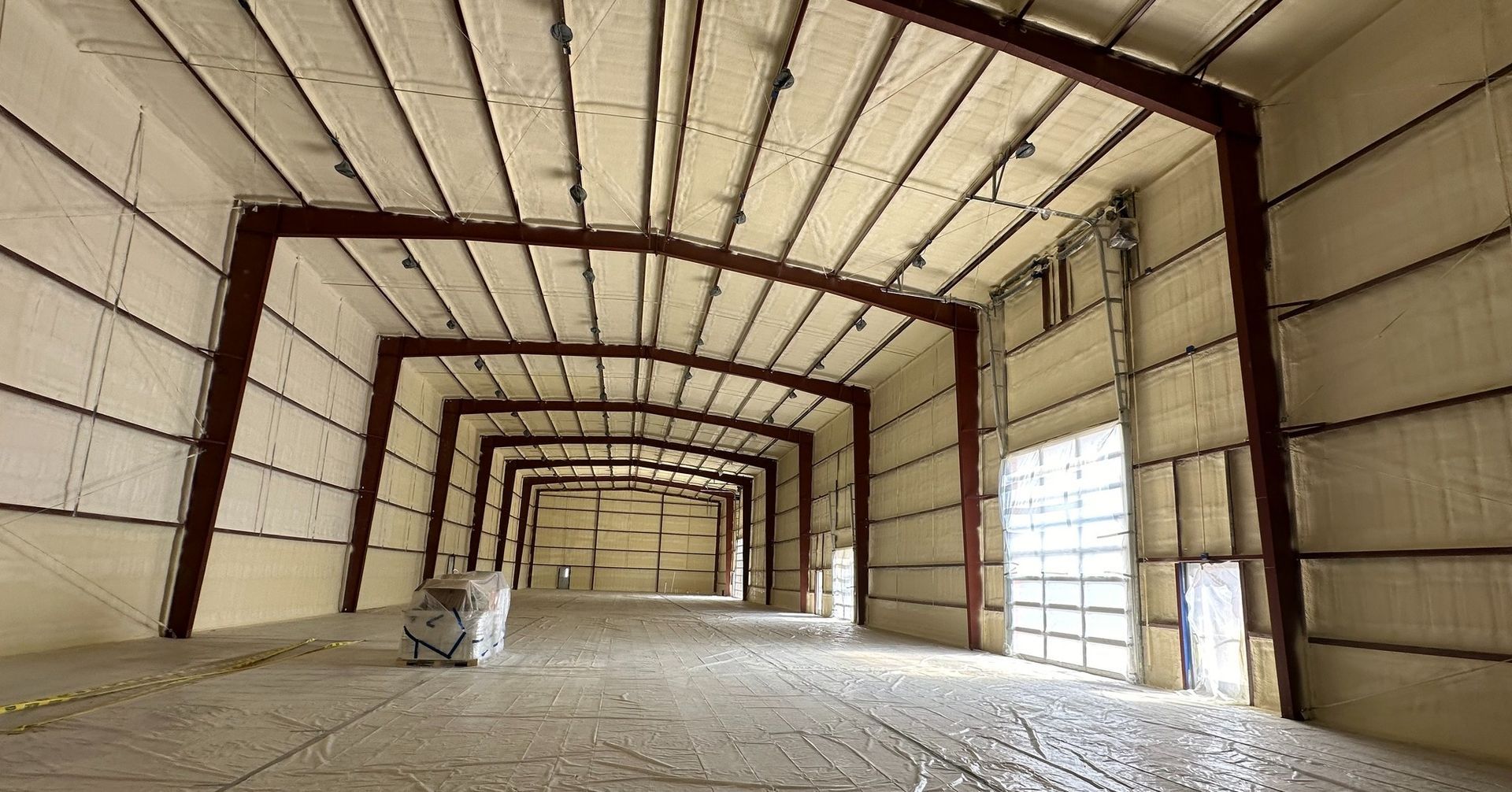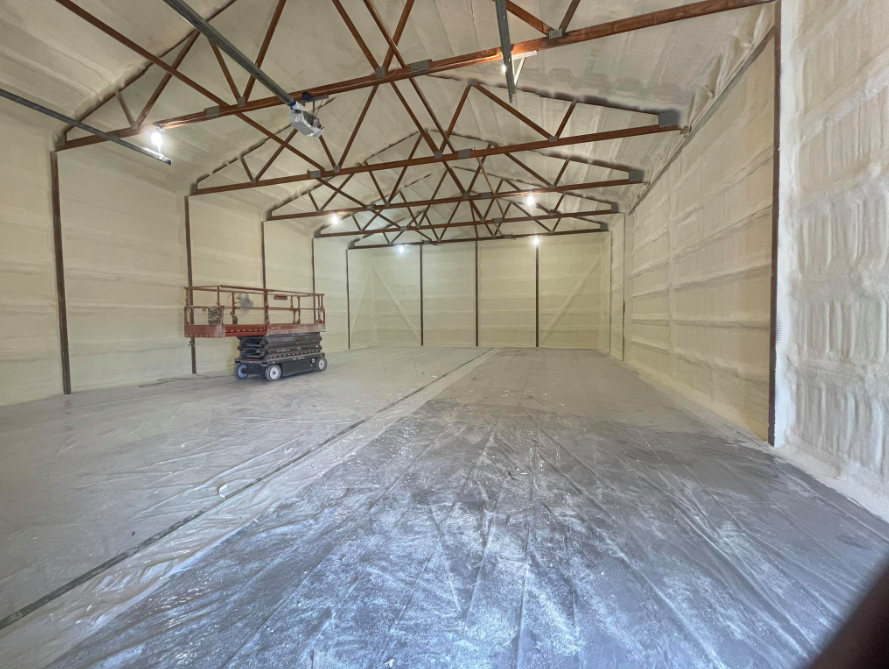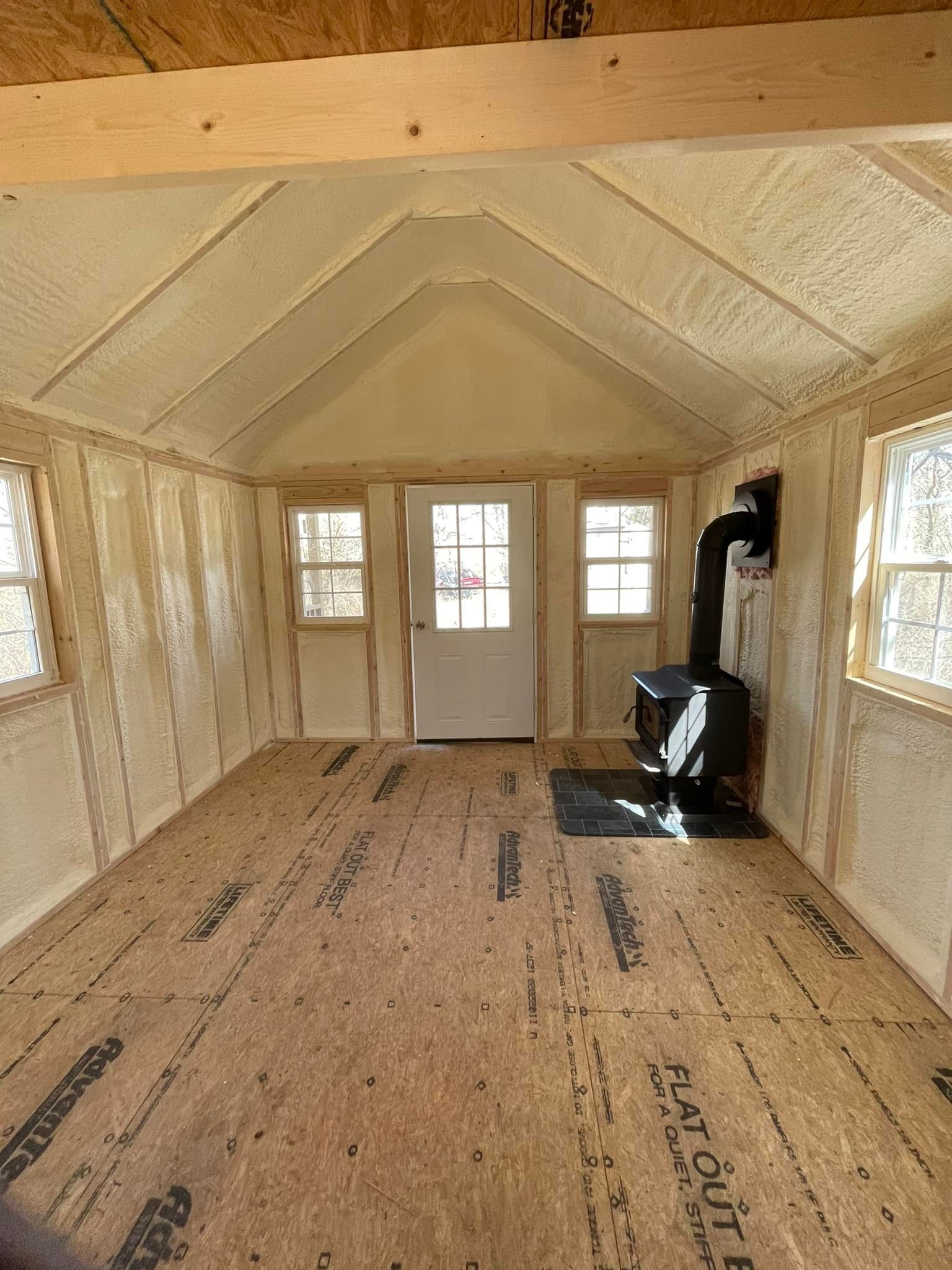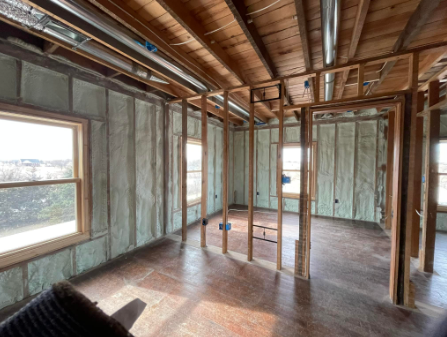Spray Foam
Insulation Service in Southeast Nebraska
Closed-cell experts for homes, farms, and businesses.
Based near Lincoln, Nebraska, Danner Spray Foam delivers high-quality closed-cell spray foam insulation for commercial, residential, and agricultural projects across Southeast Nebraska. Our work helps you keep heat in, block moisture and weather, and cut energy costs—with durable results that stand up to Nebraska’s seasons. We pair straight talk with clean, dependable workmanship so your building is tighter, quieter, and more comfortable from day one.
FREE
Estimates
One-Year
Warranty
20+ Years
Experience
What is Insulation R-Value
The R-value of insulation measures how well insulation resists heat flow. The higher the R-value means the more resistant the insulation is to heat flow. R- value is measured per inch and ranges from R-2.2 to R60. R-values vary based on type of insulation and brand of insulation. At Danner Spray Foam we use 2 lb. closed cell spray foam which is 7.1 R-value per inch.
Factors When Choosing Insulation
- Type of Insulation: spray foam (closed-cell or open-cell), fiberglass (batts or loose-fill), cellulose (loose-fill), foam board.
- Structure Needing Insulated: home, business, barn, etc.
- Areas of Structure Needing Insulation: walls, attic, crawlspace, floors
- Location Weather: city & state to determine insulation thickness.
2 lb Closed Cell Spray Foam
At Danner Spray Foam, we specialize in 2 lb closed-cell spray foam because it delivers better value: often lower total cost than open cell, higher R-value per inch, and a dense layer that blocks air and moisture to control condensation and drafts.
It leaves a
clean, durable finish and installs efficiently in
homes, commercial buildings, and ag shelters. Expect consistent cavities, fewer callbacks, and
lower operating costs over time.
| Benefits | Closed Cell Spray Foam | Open Cell Spray Foam | Fiberglass Insulation |
|---|---|---|---|
| Insulates to building code | ✔ | ✔ | ✔ |
| Provides air sealing to prevent heat loss in winter & heat gain in summer | ✔ | ✔ | X |
| Moisture barrier / Flood resistant | ✔ | X | X |
| Better maintains room temperature to reduce burden on HVAC system | ✔ | ✔ | X |
| Improves indoor air quality & eliminates harmful airborne contaminants | ✔ | ✔ | X |
| Maximizes monthly heating & cooling cost savings | X | ✔ | X |
| Reduces Sound Transmission | X | ✔ | X |
| Strengthens structure of applied surface | ✔ | X | X |
| Will not shrink, settle, or sag over time | ✔ | ✔ | X |
| Heat Gain In Summer | X | X | X |
| Stable R-Value | ✔ | ✔ | X |
| Eliminates entry for bugs and pests | ✔ | ✔ | X |
Why Spray Foam Beats Fiberglass
Fiberglass is common because it’s cheap, easy to find, and simple to install. But spray foam brings more benefits for most homes: it seals air leaks, controls moisture better, and keeps temps steadier—so rooms feel more comfortable and energy use drops.
A big worry with fiberglass is mold. While the glass fibers themselves don’t feed mold, fiberglass traps dust and dirt. Add moisture from leaks, condensation, or high humidity—and poor roof/HVAC venting—and mold can grow on that trapped grime. Because insulation is hidden in attics, walls, and crawl spaces, you might not see it right away.
Signs fiberglass may have mold:
- A musty smell
- Dark or blotchy discoloration on the insulation
- Health symptoms like allergies, headaches, coughing, sneezing, stuffy nose, or skin rashes




